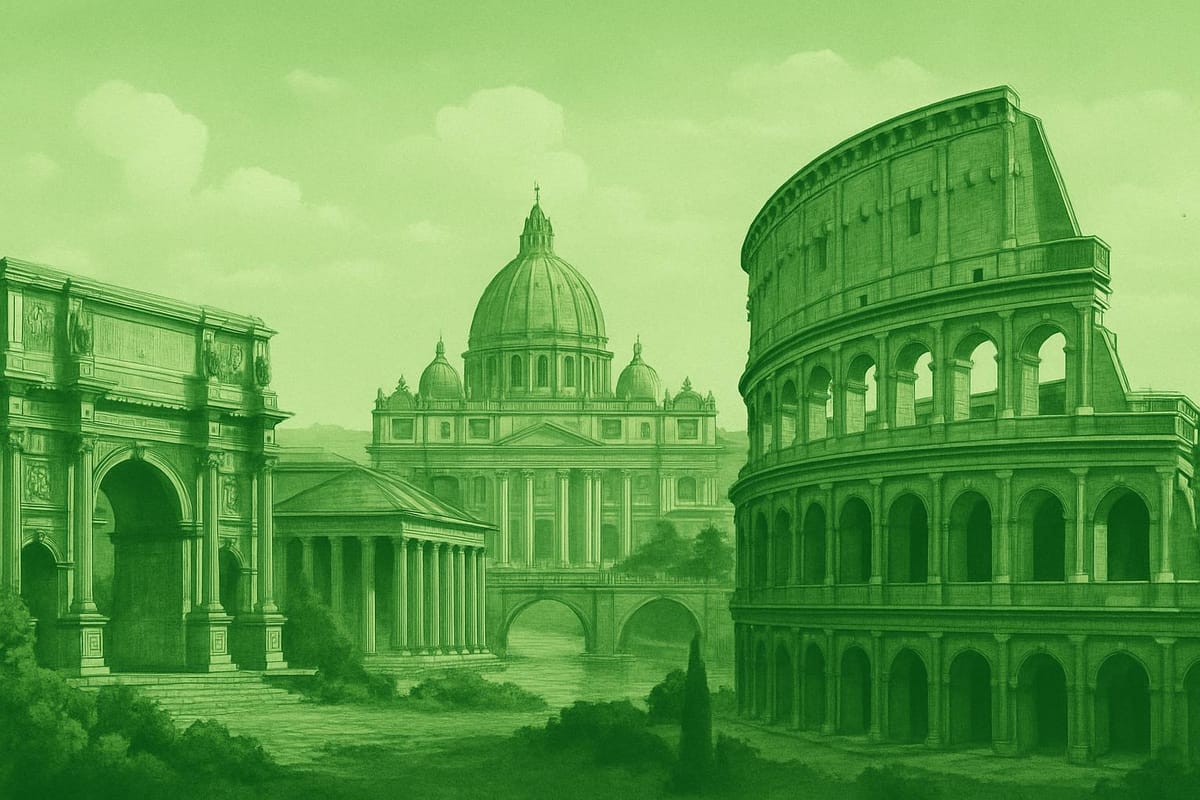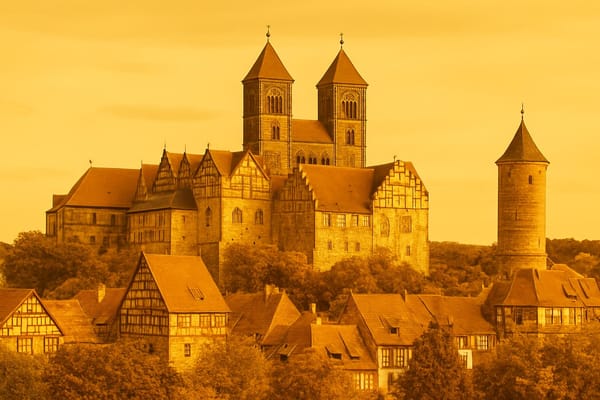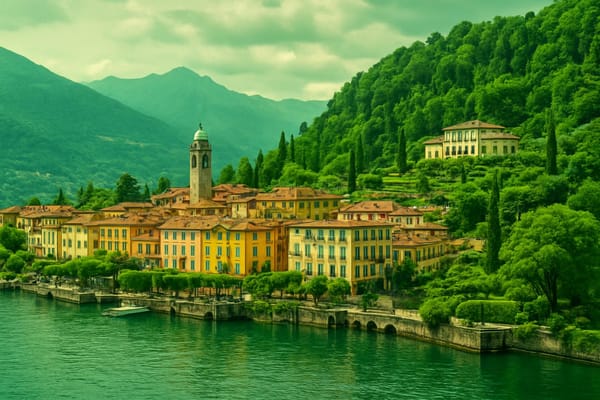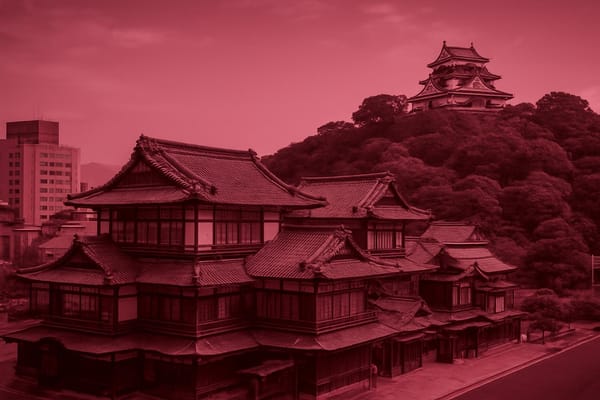Rome
Must-see ancient ruins, Colosseum marvel, Vatican art, gelato & romantic cobblestone streets.

Important things to know about Rome
Rome, Italy unfolds as a living tapestry where history and modern life blend seamlessly, offering a sensory-rich urban experience defined by winding cobblestone streets, sun-drenched façades, and a rhythm that celebrates la dolce vita; the city breathes through its neighborhoods, from bustling markets and family-run trattorie that serve authentic Italian cuisine to quiet residential lanes where laundry flutters between balconies and elderly neighbors exchange greetings. The urban fabric of Rome is shaped by layers of time, visible in the juxtaposition of contemporary shops and artisan workshops, and in the way local artisans and designers reinterpret traditional crafts for today’s culture; this fusion fuels a dynamic creative scene with galleries, independent boutiques, and a thriving food culture centered on seasonal produce and slow dining. Daily life is punctuated by the aroma of freshly brewed espresso, the chatter of open-air cafés, and the cadence of scooters weaving through traffic, while public transport - trams, buses, and an expanding metro - connects vibrant districts and quieter residential enclaves. Seasonal light and Mediterranean clima create inviting outdoor moments that locals and visitors alike savor in small parks, riverside promenades, and lively squares filled with conversation. Music, theater, and spontaneous street performances add to the city’s soundtrack, reinforcing Rome’s reputation as a place where culture is not only preserved but continuously reinvented. Whether one is exploring culinary traditions, engaging with community life, or simply soaking in the atmosphere of its streets, Rome presents an enduring urban narrative that feels as familiar as it is endlessly surprising.
Sightseeing hot-spots in Rome
Rome is a living museum where every cobblestone tells a story, and sightseeing in Rome feels like stepping back into the heart of Western civilization. Begin with the Colosseum, an iconic symbol of ancient power, and wander through the ruins of the Roman Forum where senators once debated and triumphal processions marched. Nearby, the Pantheon still amazes with its perfect dome and oculus, a testament to Roman engineering that continues to inspire architects worldwide. Exploring the Palatine Hill and the surrounding archaeological sites offers panoramic views of the city and a tangible connection to Rome’s imperial past, making these Rome Italy attractions essential stops for history lovers and first-time visitors alike.
The Vatican City, a sovereign enclave within Rome, houses some of the world’s greatest artistic and spiritual treasures, and it ranks high among the top tourist attractions in Rome. Inside St. Peter’s Basilica the grandeur of Renaissance art and architecture culminates in Bernini’s baldachin and Michelangelo’s Pietà, while the Vatican Museums shelter an immense collection of classical and modern masterpieces. No visit is complete without seeing the Sistine Chapel, where Michelangelo’s ceiling frescoes are an unforgettable highlight for anyone interested in art, faith, and cultural heritage. Guided tours and early-morning visits can help you beat the crowds and deepen your appreciation of these timeless works.
Beyond monuments and museums, Rome’s charm is found in its lively squares, fountains, and neighborhoods that invite leisurely exploration. Toss a coin into the Trevi Fountain, stroll the sweeping steps of the Spanish Steps, and linger in Piazza Navona to admire Bernini’s fountains and street artists. Cross the Tiber to the bohemian lanes of Trastevere for authentic cuisine and evening ambiance, or climb to the orange garden for a sunset view over terracotta rooftops. Whether you’re searching for the best things to do in Rome or planning an extensive sightseeing itinerary, the city combines world-class heritage, vibrant street life, and unforgettable culinary experiences that define the ultimate Rome sightseeing adventure.
Hotels to enjoy in Rome
Hotels in Rome offer an irresistible mix of history, style, and modern comfort, making them a top choice for travelers seeking authentic Italian experiences. From charming boutique hotels in Rome tucked into narrow cobblestone streets near Piazza Navona to grand luxury hotels in Rome with panoramic terraces overlooking the Spanish Steps, there is an option for every taste and budget. Many Rome hotels are housed in renovated palazzos that blend antique frescoes with contemporary amenities, while others emphasize eco-friendly design and personalized service. Visitors searching for a hotel near the Colosseum or a hotel near the Vatican will find excellent choices within walking distance of major attractions, which helps maximize sightseeing time and provides a quintessential Roman atmosphere that feels both intimate and historic.
Choosing the right Rome hotel can transform a trip into an unforgettable getaway: families often prefer spacious suites or apartments in central Rome, couples may seek romantic rooftop views and candlelit dining, and solo travelers often opt for lively neighborhoods like Trastevere for nightlife and local flavor. Smart travelers look for hotels that include breakfast options, easy access to public transport or airport shuttles, and onsite concierge services to book tours and restaurant reservations. Whether prioritizing location, price, or unique character, researching Rome hotels with guest reviews and up-to-date photos helps secure the best stay. For anyone planning a visit, the diverse selection of hotels in Rome ensures a memorable stay that complements the city’s legendary cuisine, art, and ancient architecture.
Restaurants to try in Rome
Rome's dining scene is a vibrant tapestry where ancient streets meet contemporary flavors, and the restaurants of Rome offer everything from family-run trattorie to elegant, modern kitchens. Walking through neighborhoods like Trastevere, Testaccio, and near the Colosseum, you'll discover cozy osterias serving classic dishes such as carbonara and cacio e pepe, alongside pizzaiolos hand-tossing wood-fired pizza. For travelers searching for the best restaurants in Rome, the city rewards those who seek both traditional Roman cuisine and innovative interpretations of Italian staples. Fresh, local ingredients are the foundation here-seasonal vegetables from nearby markets, artisanal cheeses, and seafood delivered daily-so expect menus that change with the season and chefs who celebrate regional produce with bold, authentic flavors.
Beyond the classics, Rome's culinary landscape includes refined fine dining restaurants and casual spots perfect for a leisurely aperitivo by a bustling piazza. Food markets and street food stalls provide quick bites like supplì and authentic gelato, appealing to visitors who want genuine local experiences without the formality. Many Italian restaurants in Rome blend history and hospitality, offering meals in atmospheric cellars or under vine-covered terraces. Whether you're compiling a list of restaurants in Rome for a romantic dinner, family outing, or a budget-friendly adventure, the city delivers diverse dining options that satisfy seekers of memorable meals, unforgettable flavors, and the warm conviviality that defines Roman hospitality.
Best shopping stops in Rome
Rome is a paradise for anyone interested in shopping in Rome, where history and style merge along sun-drenched streets and elegant arcades. The area around the Spanish Steps and Via Condotti hosts the most luxurious designer boutiques and flagship stores, perfect for those seeking high fashion and the latest collections. For more mainstream finds, Via del Corso and the grand indoor Galleria Alberto Sordi offer a mix of international brands and Italian favorites, while Via dei Coronari tempts with antique dealers and timeless souvenirs. Whether hunting for bespoke suits, glittering jewelry near Piazza di Spagna, or classic Italian leather goods crafted by family-run ateliers, Rome shopping delivers quality and atmosphere: every purchase feels like a small piece of Roman heritage.
Beyond the luxury avenues, the true heart of Rome’s retail scene pulses in its markets and neighborhoods, where local flavor and bargains abound. Campo de' Fiori brims with fresh produce and gourmet treats by day, and Porta Portese turns Sundays into a treasure hunt at one of Italy’s largest flea markets. The bohemian lanes of Monti and Trastevere reward visitors with vintage finds, independent designers, and handmade sandals and accessories made by skilled artisans. Food lovers will appreciate specialty spots like Eataly and small enoteca shops for authentic culinary souvenirs, while savvy shoppers can benefit from tax-free shopping and polite bargaining at open-air stalls. Whether you prioritize luxury labels, artisanal craftsmanship, or lively market haggling, Rome offers a rich and diverse shopping experience that keeps style-conscious travelers coming back.
Nightlife highlights in Rome
Rome’s nightlife is an intoxicating mix of ancient backdrop and contemporary energy, where evenings begin with a relaxed aperitivo and end in dancing under the stars. In neighborhoods like Trastevere and Monti, cobbled streets fill with locals and travelers enjoying craft cocktails, small plates, and lively conversation; nearby Campo de' Fiori transforms into a buzzing hub of bars and terraces as the sun sets. For unforgettable vistas, seek out rooftop bars with views of the Colosseum and the domes around Piazza Navona, where you can sip a spritz while historic monuments glow. The diversity of options- from intimate wine bars to bustling beer halls-makes Rome nightlife in Rome, Italy uniquely appealing to every kind of night owl.
As the night deepens, the scene shifts to energetic clubs, late-night live venues, and cozy jazz clubs tucked into narrow lanes. Areas like Testaccio and Ostiense are known for their dance floors and electronic music, while smaller venues offer acoustic sets and indie bands for a more intimate vibe. Night markets and street performers add an impromptu flair, and the city’s late-night cafés and gelaterie keep the mood alive until the early hours. Whether you’re after craft drinks, live music, or full-on clubbing, Rome nightlife delivers a memorable Roman evening that blends tradition with modern nightlife trends.
Getting around in Rome
Rome's airport and train situation is convenient and varied for travelers: the main international gateway is Fiumicino (Leonardo da Vinci) with the fast Leonardo Express non-stop train to Roma Termini in about 32 minutes and the frequent FL1 regional line stopping at major hubs, while the smaller Ciampino handles many low-cost carriers and relies on shuttle buses and local buses to the metro and Termini; within the city, Roma Termini is the central rail hub connecting local commuter services, regional lines and high-speed trains operated by Trenitalia and Italo to destinations across Italy, with Roma Tiburtina serving as an alternative high-speed station for some routes, and the integrated Metro A and B network plus extensive bus and tram services (operated by ATAC) making first- and last-mile transfers manageable; travelers should expect easy access to taxis, car rentals and luggage-friendly connections but also be aware that occasional strikes or busy holiday periods can affect schedules, so planning ahead, buying tickets online for high-speed trains, and allowing extra time for airport transfers will ensure a smoother journey through Rome.
Culture must-see's in Rome
Rome bursts with cultural highlights that span millennia, where ancient ruins sit cheek by jowl with lively modern neighborhoods. Walking through the Colosseum, past the Roman Forum and into the awe-inspiring rotunda of the Pantheon, visitors experience layers of history in every cobblestone and piazza. The city’s public spaces - from the baroque drama of Trevi Fountain to the elegant sweep of the Spanish Steps - showcase architectural brilliance and urban design that shaped Western taste. Museums and archaeological sites preserve treasures of Roman art and history, while small artisan shops, open-air markets and street performers keep the city’s traditional crafts and daily life vibrant. Strolling in the early morning or long after sunset reveals a Rome where timeless monuments are part of neighborhood rhythms, drawing photographers, history lovers and cultural travelers who search for authentic experiences and iconic things to see in Rome.
Beyond antiquity, Rome is a living canvas of art, religion and gastronomy, where the Vatican commands global attention with the Sistine Chapel and masterpieces by Michelangelo and Bernini. The Vatican Museums and countless galleries house Renaissance and Baroque works that attract scholars and casual visitors alike, making Rome a top destination for lovers of Italian art. Culinary culture is equally central: intimate trattorias, bustling markets and the ritual of espresso or creamy gelato offer a sensory tour of Italian cuisine. Festivals, opera performances and contemporary galleries highlight the evolving cultural scene, while fashion boutiques and design studios underline Rome’s place in modern Italian lifestyle. For anyone seeking the essence of Rome, Italy, the city’s cultural highlights deliver a rich tapestry of history, creativity and everyday charm that rewards repeat visits and careful exploration.
History of Rome
Rome stands as one of the most storied cities in the world, and the history of Rome is a tapestry of myth, conquest and cultural innovation that shaped Western civilization. According to legend, Rome was founded by Romulus and Remus on the banks of the Tiber; historically it grew from a cluster of Latin and Etruscan settlements into the powerful Roman Kingdom and then the Roman Republic. During the Republic, institutions like the Senate and the system of magistracies guided a city-state that expanded through the Italian peninsula and beyond, famously clashing with Carthage in the Punic Wars and sending generals such as Julius Caesar and Pompey into the pages of history. The assassination of Caesar precipitated the end of the Republic and the rise of Augustus, who established the Roman Empire and ushered in the Pax Romana. This imperial phase brought vast territorial control, advanced engineering, and monumental architecture-roads, aqueducts, temples and arenas-that remain visible in modern Rome and that continue to attract scholars and tourists eager to explore the roots of law, language and urban planning.
At its height the Roman Empire integrated diverse peoples and laid foundations for law, literature and Christianity, which would become a defining element of the city's identity after Constantine and Theodosius. The spectacular Colosseum and the archaeological remains of the Forum and Palatine Hill testify to Rome’s imperial grandeur, while the artistic revival of the Renaissance and the spiritual authority of the Vatican shaped medieval and early modern Europe. After centuries as the center of the Papal States, Rome was incorporated into the unified Kingdom of Italy in 1870 and later became the capital of modern Italy, blending antiquity with contemporary life. Today the city's conservation efforts, museums and ongoing excavations keep the history of Rome alive, offering visitors an extraordinary narrative that stretches from ancient myths through republican institutions and imperial dominion to religious and cultural rebirth. Whether one walks along ancient cobblestones, studies inscriptions carved in stone, or contemplates the layers of urban development, Rome remains an essential destination for understanding the trajectory of European and Mediterranean history.



